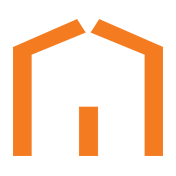

Can Home-Monitoring Technology Prevent Falls in Elders?
Up to 50 percent of elders fall each year in their home. Many of these falls result in broken bones, hospital admissions and relocation to nursing homes for ongoing care.
Given the choice, most elders at risk of falling would choose to live independently in their own homes, rather than move in with family or to an assisted living facility. But can an elder, who is growing frailer with age, remain at home safely?
Preventing Falls With Technology
Falls are caused by several risk factors (unstable health conditions, medications, environmental hazards and dangerous physical activities). The most effective way to address the risk of falling is to identify and reduce factors that cause it.
Technology can help with that. With today’s devices that monitor fall risk, the likelihood of remaining at home is feasible. Home-monitoring technologies include:
- Fall-detection devices (PERS, or Personal Emergency Response System, and passive sensors), which evaluate whether a fall has taken place and alert others that an individual has fallen.
- Fall-prevention devices that measure gait and balance in order to predict the likelihood of falling.
- Fall-monitoring systems that analyze risk. Sensors installed in key locations throughout the home monitor movement and activity every day. They can detect changes in routines, abnormal movements and falls.
Home-monitoring technology can be appropriate for elders with the following:
- History of falling.
- Inability to help themselves up after a fall.
- Extended periods of solitude at home (whether living alone or left alone by a caregiver for long periods of time).
- Balance and vision impairment.
- Cognitive problems (dementia).
- Multiple prescription drugs that affect motor skills and balance.
- Various chronic health conditions (such as Parkinson’s disease, severe arthritis, stroke, etc.) and problems with safe mobility.
The Benefits of Using Technology
Both elders and their caregivers are more likely to accept this type of fall-monitoring technology because of its many benefits. Some of those include the following:
- The system works around the clock (24/7).
- It honors the elder’s privacy.
- It provides quick response to falls and other risky situations.
- The elder is unaware of the system and doesn’t need to wear any monitoring accessories.
The jury is still out as to whether technology can help prevent falls. However, the likelihood of success is increased when technologies are:
- Targeted toward the elder’s needs.
- Utilized with interdisciplinary strategies designed to identify and reduce factors responsible for falling.




